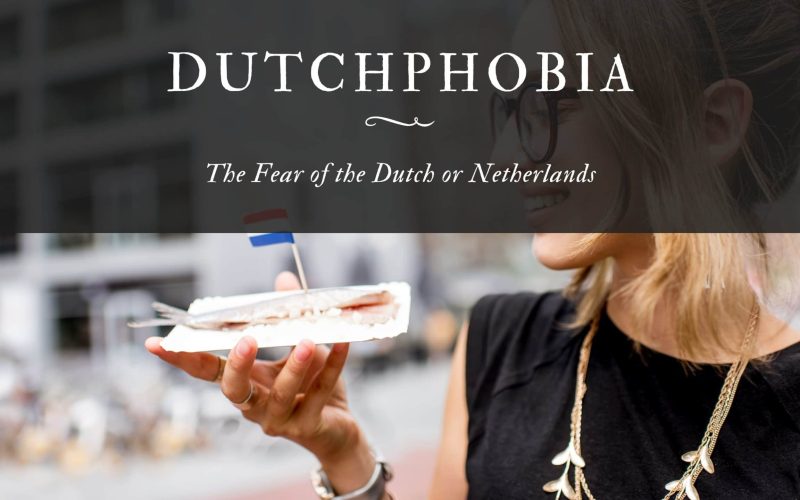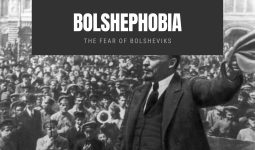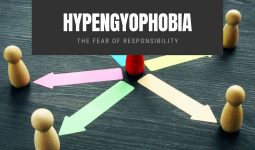The people of the Netherlands are known as Dutch. These people are part of the West Germanic ethnicity, with ‘’Dutch’’ as their official language. Like every other ethnicity, they have their own culture, festivals, and beliefs.
While many people, including Dutch people, some outsiders, and visitors, see the Dutch culture, festivals, and beliefs as beautiful, some find it disturbing that they fear even the thought of anything relating to the Dutch and its culture, and the fear of the Dutch is called Dutchphobia.
Dutchphobia may be a result of specific experiences and other factors causing unpleasant symptoms, which may affect the sufferer’s day-to-day activities but can be treated by therapy and medications.
What is Dutchphobia?
Dutchphobia is widely considered a social fear because it refers to the fear of the Dutch and their culture.
Dutchphobia is a psychological condition that can happen to anyone with unpleasant symptoms, which can be life-limiting, but it is very treatable.
Causes of Dutchphobia
Generally, experts believe that phobias result from some factors which could trigger the development of the condition.
These factors are divided into two, and they are:
- The intrinsic factors
- The extrinsic factors
The Intrinsic Factors
These factors relate to the internal makeup of the individual, which may include:
- Heredity and genetics: It is believed that an individual’s genetic makeup is the cause of certain conditions such as Sickle cell anemia, etc. Experts believe that if other conditions can be inherited from an ancestor who must have had it, then phobias, specifically Dutchphobia.
- Personality: Personality is defined as the qualities of an individual’s way of talking, thinking, feeling, and doing things. It influences our moods, attitudes, and views. A person whose character is characterized by hatred, a feeling of superiority, or fear may see or hear something they find utterly fearful about Dutch, which puts him or her at risk of developing Dutchphobia.
The Extrinsic Factors
These are factors surrounding the individual that could be the cause of the development of the condition.
- Trauma: Generally, it is believed that trauma is the common cause of phobias. A traumatic event can leave an indelible mental mark on the individual, which can go a long way in denting the individual’s life. Dutchphobia is likely to develop after a traumatic experience with anything relating to Dutch.
- Background upbringing: The environment has a significant influence on an individual’s well-being, beliefs, and attitudes. A child growing up in an environment that always paints the Dutch people and their culture in scary ways or in a home with one or two family members with this condition is likely to develop Dutchphobia, too.
Experts suggest that the development of this condition may result from the combination of intrinsic and extrinsic factors.
Symptoms of Dutchphobia
In phobias, symptoms experienced vary across individuals depending on the degree of fear that person possesses.
These symptoms can be life-limiting, disrupting the individual’s normal way of living and the person’s intrapersonal and interpersonal relationships.
These symptoms manifest in two forms – The physical and the psychological- proving that this condition affects an individual’s physical and psychological well-being.
Physical Symptoms
Sufferers of Dutchphobia frequently have panic attacks when triggered. The panic attacks that they experience can be so frightening that it puts the sufferer in a state of distress.
Although sufferers have to be triggered before they experience some symptoms accompanying this condition, these symptoms can be experienced suddenly without any warning.
Panic attacks can be so overwhelming to an individual that they cause physical reactions such as:
- Excessive sweating
- Trembling
- Hot flushes
- Difficulty breathing
- A choking sensation
- Rapid heartbeat
- Sharp chest pain
- An impression of butterflies in the stomach
- Nausea
- Headaches and dizziness
- Feeling faint
- Nerve numbness
- Dry mouth
- A need to go to the toilet
- Ringing or buzzing in ears
- Confusion
- Hyperventilation
- Increase in blood pressure
Psychological Symptoms
In a handful of very serious cases, an individual may experience panic attacks triggered by Dutchphobia, most times when exposed to anything that can cause the individual to be triggered.
The following are symptoms that prove that Dutchphobia affects the psychological well-being of the patient:
- Fear of losing control
- Fear of fainting
- Feelings of dread
- Fear of death and dying
- Fear of harm or illness
- Guilt, shame, self-blame
- Withdrawing from others
- Feeling sad or hopeless
- Feeling disconnected
- Confusion, difficulty concentrating
- Anger, irritability, mood swings
- Anxiety and fear
However, in some rare cases, people have had what we call ‘’Complex phobias,’’ like a chain of phobias linked together.
This is life-limiting because it would make the individual unable to live a normal life and maintain a healthy social life.
Once the person is triggered, he or she is bound to have the intertwine of the symptoms mentioned above with depression added to the list.
Treatment of Dutchphobia
Like in many phobias, sufferers always feel the need to avoid encountering their source of fear so that they won’t be triggered, but sometimes, this is difficult and maybe impossible. Mind you, most of the time, you cannot escape your thoughts.
Professional assistance is needed to treat Dutchphobia. A mental health worker may be able to help you overcome Dutchphobia.
According to experts, consulting a mental specialist working cooperatively with you may be a cure for most phobias.
Still, no treatments are available for them or a guarantee that it will work. Majorly, it depends on the individual and how severe the condition is.
Talking Therapy for Dutchphobia
Talking therapy, including counseling, could be effective in the treatment of Dutchphobias. This involves a professional therapist working closely with you to achieve the following aim:
- It helps you identify negative behavior and thoughts and find ways to change them, if you want to.
- Help you resolve complicated feelings or adopt ways to live with them
- Help you make sense of things and understand yourself better
- Give you a scheduled time and a comfortable place to talk to someone who will not judge you
By just merely having to speak to your therapist about your thoughts, feelings, moods, and behavior, session after session, you hope to achieve the above-listed aims.
(CBT) CognitiveCognitive-behavioral
Experts suggest that our thoughts and perception have a heavy and constant influence on our behavior.
The continuous experiences of anxiety, mental stress, and distress influence your perception and distort it over reality.
Cognitive Behaviour Therapy helps you identify the negative thought patterns, anxiety, fear, and those unhelpful distorted perceptions you have of Dutch and then equip you with strategies to help overcome them.
Medication
There are three major types of medicines recommended for the treatment of anxieties and anxiety disorders, and they include:
- Antidepressants
- Tranquillizers
- Beta-blockers
These drugs always have psychoactive effects on the people when taken. Although they are not the cure for phobias, they are administered for their calming effects, which can help control anxiety. They can be prescribed even on the course of therapies.
Note: These medicines are to be used when prescribed and the instructions of the prescription should be followed strictly. Because your doctor has better knowledge of this, these medications are prescribed to be used short-term only because long-term use can result in substance use disorder – Addiction and Dependence. Do not self-medicate.








